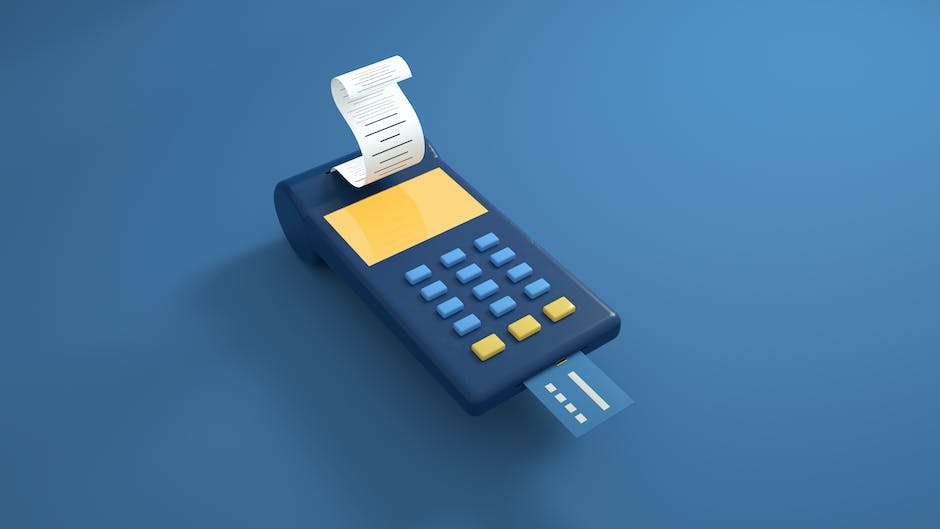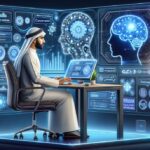Our world is on the brink of a major technological revolution with the advent of specialized Generative Pre-trained Transformer (GPT) applications. These sophisticated AI tools are swiftly emerging, bringing extraordinary customization to sectors such as healthcare, finance, and the creative arts. By diving into the origins and advancements of these applications, we’ll uncover how their specialized abilities are shaping a new future for industry-specific solutions, transforming the way we work and create.
Emergence of Specialized GPT Applications
Table of Contents
Specialized Generative Pre-trained Transformer (GPT) applications are reshaping various industries by offering advanced AI capabilities. These tools are built to understand and generate human-like text, enabling businesses to automate and enhance numerous tasks.
In customer service, GPT applications are powering chatbots that provide immediate, round-the-clock assistance. This not only improves the customer experience by offering quick answers but also reduces the workload on human staff. By handling routine inquiries, employees can focus on more complex customer needs.
In the healthcare industry, GPT-based systems are assisting doctors. They process medical literature and patient records at remarkable speeds, finding vital information that can aid in diagnosis and treatment planning. This means doctors can stay updated with the latest research without spending hours reading studies.
Content creation has transformed thanks to GPT applications. They can draft articles, marketing copy, and even generate creative writing. While human oversight is still necessary to ensure quality, these AI tools save content creators valuable time by drafting initial text that can be refined later.
In the legal field, GPT is simplifying document review. Scanning through lengthy legal documents, the AI can highlight relevant sections, freeing up lawyers’ time for critical analysis and case strategy. This isn’t just about speed—it’s about enabling lawyers to serve their clients better.
Education is also benefiting from specialized GPT applications. Tailored tutoring systems can offer students personalized learning experiences. The AI responds to student input, adapting its teaching approach to suit individual learning styles and paces.
Financial services are leveraging GPT to create smarter trading algorithms and customer advice systems. By analyzing vast amounts of market data and news articles, these AI-powered tools can assist in investment decisions and provide financial insights in a way that was previously not possible.
However, there’s a word of caution. The integration of GPT applications must be handled with care to protect privacy and ensure ethical use. Overreliance on AI can also raise concerns about job displacement. Hence, industries are navigating the balance between harnessing these powerful tools and maintaining a human touch in their services.
The wave of specialized GPT applications is just beginning. As these systems become more advanced, we can expect an even greater impact on the way industries operate, bringing efficiency and innovation to the forefront. As we continue to witness the transformation, the potential for growth and improvement across sectors seems almost limitless.

Understanding the Technology Behind GPT
At the heart of specialized GPT (Generative Pre-trained Transformer) applications lies a sophisticated blend of artificial intelligence (AI) technologies. These tools are revolutionizing how we interact with digital systems, transcending beyond basic AI to offer insights that were once the exclusive domain of human expertise. The foundation of these applications can be dissected into several key components, each playing a pivotal role in their operation and efficacy.
Firstly, large-scale data analysis sets the stage for GPT applications. To grasp and generate human-like text, these systems are trained on vast datasets that cover a broad spectrum of knowledge. This training involves parsing through countless documents, from books to websites, absorbing language patterns, nuances, and the intricacies of various subjects. The algorithm learns to predict the next word in a sequence, getting better over time as it is fed more data, ultimately refining its understanding and output.
Central to GPT applications is the underlying neural network architecture. This network, composed of layers upon layers of interconnected nodes, mimics the neural connections of the human brain. It processes input data, identifies patterns, and adjusts its internal parameters through backpropagation — a method that evaluates errors and tweaks the model accordingly. As a result, the network becomes adept at handling complex language tasks, from responding to customer queries to generating new content that matches human tone and context.
Contextual understanding in these applications is paramount. They are designed not only to process individual words but also to grasp the context surrounding them. This capability allows the models to produce remarkably coherent and relevant text. Whether it’s a Chatbot offering personalized shopping advice, or a virtual tutor facilitating a student’s homework, GPT applications can assimilate the subtleties of the task at hand, delivering tailored responses with impressive accuracy.
Additionally, these applications lean heavily on transfer learning. This approach enables a pre-trained model to be fine-tuned for specific tasks without starting from scratch. For instance, a GPT model initially trained on a vast dataset might then be fine-tuned with legal texts to perform document review in a law firm. This fine-tuning process imbues the application with specialized knowledge, allowing it to operate within a niche while maintaining the broad understanding acquired during initial training.
Interactivity and feedback mechanisms are also integral to the functionality of GPT applications. They’re built to engage in dialogue, learning from each interaction. User feedback can be harnessed to further refine the model’s performance. This creates a dynamic learning environment where the application evolves continuously, honing its expertise and adapting to the preferences and requirements of its users.
Under the umbrella of these technologies, specialized GPT applications venture to solve problems and offer convenience across diverse sectors. While they already exhibit a high degree of sophistication, an ongoing commitment to innovation promises to unlock even greater possibilities. As developers and researchers continue to explore the potential of GPT models, these applications are poised to become increasingly integral to our daily lives, reshaping industries and challenging our notions of what AI can achieve.
In understanding what drives these specialized GPT applications, we grasp not only their current capabilities but also the profound future they hint at – a future where AI and human intelligence converge in unprecedented ways to advance the way we live, work, and interact with the world around us.

GPT Customization and Training
Customizing Generative Pre-trained Transformer (GPT) models for specialized applications is akin to training a versatile artist to master a particular style. This process tailors the expansive knowledge and general capabilities of the GPT to focus intently on specific tasks or industries.
To begin, developers select a base GPT model, which has been pre-trained on a colossal corpus of text data, giving it a foundational understanding of language. Imagine it as a jack-of-all-trades of the digital world. From that starting point, the GPT is then fine-tuned. This involves additional training, often on a dataset that’s highly relevant to the targeted application. For instance, a GPT customized for legal applications would be fed a diet of legal documents, case law, and statutes to understand the legal lingo and reasoning.
The tuning process includes adjusting the GPT’s parameters, which are like the dials and knobs of a machine, to align its output with the specialized application’s requirements. It resembles hiring an experienced guide to lead you through a city’s unique labyrinth of streets—the guide’s honed skills ensure no misstep in uncharted alleys.
During this stage, specific prompts, queries, and tasks related to the desired application area are given to the GPT. It generates responses, which are then reviewed and corrected by experts. This is akin to an apprenticeship where a master craftsman shapes the skills of the apprentice through hands-on projects and deliberate practice.
Feedback is crucial here, and it’s incorporated into the model’s learning through reinforcement learning techniques. This is where the model is rewarded for correct predictions and discouraged from making errors, essentially cultivating its expertise in the chosen domain. Imagine training a promising athlete with drills tailored to their chosen sport—the feedback loop continuously sharpens their abilities.
In addition, developers can layer on additional rule-based systems or specialized software to help the GPT model adhere to industry-specific regulations or standards. This is akin to outfitting our artist with the finest brushes and most vivid paints designed for the chosen art style.
Once sufficiently honed, the customized GPT model emerges as a specialized tool. Its capabilities could range from generating concise summaries for lengthy legal cases to providing nuanced financial advice or crafting educational content that aligns with curriculum standards. The model acts as a digital expert, deeply versed in the language and nuances of its designated field.
As GPT continues to evolve, we see these customized versions not just as standalone solutions but as collaborative partners. They work alongside humans, enhancing the joint capabilities to solve complex problems or create innovative solutions. The symbiosis of AI and human expertise carries the potential to redefine proficiency in countless domains, forming a beacon for future advancements that could transform our world.

Ethical Considerations and Governance
The deployment of specialized GPT applications carries with it a suite of ethical considerations that are essential to scrutinize. At the forefront is the matter of accountability. When these AI systems are used to make decisions or take actions that affect people’s lives, questions about who is responsible for those decisions arise. Unlike traditional decision-making processes, the rationale behind an AI’s conclusion can be opaque, rendering it challenging to attribute responsibility when outcomes are unfavorable.
Bias in AI is another significant concern. Machine learning algorithms, including those employed in GPT applications, are only as neutral as the data they’re trained on. If the data contains historical biases, the AI can perpetuate or even exacerbate these prejudices. This is particularly troubling in areas like recruitment or legal judgments, where bias can lead to unjust outcomes. The ethical use of GPT apps obliges the creators to acknowledge and actively mitigate these biases.
Privacy risks accompany GPT applications as they often require large amounts of data to function optimally, some of which might be personal or sensitive. The ethical collection, storage, and use of this data is critical, and becomes complex when these systems span different geographies, each with their own privacy regulations.
Moreover, the use of GPT technology in misinformation and manipulation presents a profound ethical dilemma. The ease with which these applications can generate persuasive text makes them powerful tools for fabricating news, impersonating individuals, and swaying public opinion. Establishing safeguards to prevent such abuses is not just advisable; it is imperative.
Looking to the future, the ethical implications of increasingly autonomous AI systems must be anticipated. The deeper integration of GPT apps into daily operations could foster an over-reliance on technology, where human oversight becomes the exception rather than the rule. Ensuring that these systems are designed to complement human intelligence, rather than replace it, remains a top ethical priority.
In conclusion, while specialized GTP applications offer a myriad of benefits, assessing their ethical ramifications is a complex yet necessary endeavor. Establishing a framework that addresses these considerations is crucial as we chart the future course of AI integration into society. With careful attention to these ethical aspects, we can aim to harness the power of GPT applications to enrich and enhance human decision-making, not undermine it.

Real-world Deployment and User Adoption
Emerging technologies, like specialized GPT applications, are revolutionizing industry practices through automation and personalization. One innovative deployment is in linguistic translation services. These advanced tools not only convert text from one language to another but also comprehend cultural nuances, idioms, and local expressions. This ability to grasp context ensures translations are not just literal but carry the intended meaning, fostering improved communication in an increasingly connected world.
Another practical adoption is seen in the realm of e-commerce. Imagine a personalized shopping assistant that knows your taste, size, and budget preferences; specialized GPTs are now powering such virtual aides, transforming the shopping experience by providing tailored recommendations. This shift not only streamlines the purchasing process but also elevates the customer experience, creating a more engaging and intuitive interface.
In the automotive industry, specialized GPT applications are being implemented in the form of intelligent navigation systems. These AI-powered assistants offer more than directions; they provide real-time traffic analysis, suggest convenient pit stops, and integrate with a driver’s schedule to propose the most efficient routes.
The entertainment domain, too, is being reshaped by these AI models. Scriptwriters and game developers utilize GPTs to generate creative storylines and dialogues. The technology’s capacity to produce diverse narrative threads on demand allows for cost-effective content creation, helps overcome writer’s block, and injects new life into storytelling techniques.
Meanwhile, in the quest to protect the planet, environmental agencies employ GPTs for predictive modelling of ecological changes. This usage facilitates the forecasting of weather patterns, assesses the impact of human activity on natural habitats, and enables the proactive management of resources. By doing so, specialized GPT applications assist in crafting informed conservation strategies.
In smart homes and the Internet of Things (IoT) landscape, these AI models are integrating devices seamlessly, enabling households to adapt to the comfort and routine of inhabitants. Whether it’s setting the optimal temperature, managing energy consumption, or ensuring home security, GPTs are at the forefront, providing an intuitive and interactive living environment.
Finally, in the philanthropic space, charitable organizations leverage GPT technology to personalize communication with donors. By understanding individual preferences and engagement history, these systems facilitate the creation of bespoke messages that resonate with supporters. This personal touch not only enhances donor relationships but also maximizes the efficacy of fundraising campaigns.
As the adoption of specialized GPT applications broadens across various domains, their capacity to custom-fit solutions drives efficiency, innovation, and enrichment of human experience. The seamless fusion of artificial intelligence into the fabric of everyday life marks a new era of technology, redefining what is possible while honoring the human touch, which remains irreplaceable.

The Future of Specialized GPT Applications
The expanding frontier of specialized Generative Pre-trained Transformer (GPT) applications promises to reshape our interaction with technology. Looking ahead, we’re on the cusp of a breakthrough era where these applications not only perform tasks but also adapt and learn from their environments, yielding unprecedented levels of personalization.
Predictive maintenance stands at the forefront, with applications set to revolutionize industrial sectors. Picture GPT systems intricately analyzing equipment data across thousands of sensors, pinpointing breakdown risks before they occur, and scheduling timely repairs without human intervention.
In the realm of entertainment and media, GPTs are gearing up to curate hyper-personalized experiences. Streaming services will leverage these applications to analyze viewing habits intricately, suggesting content that aligns precisely with individual preferences, perhaps even crafting custom storylines on the fly to keep audiences engaged.
The next wave of GPT applications holds transformative potential for smart city planning and management. By processing vast arrays of urban data, these systems will optimize everything from traffic flow to energy distribution, making city living more efficient and reducing the environmental footprint.
In creative domains, we’re poised to see GPTs partnering with artists and designers, offering them a springboard for innovation. These applications will suggest novel design elements, compose music, or generate inspirational art, becoming indispensable tools for creative minds.
Similarly, in the culinary world, GPT applications might soon craft recipes tailored to dietary needs and flavor profiles, transforming how professional and home chefs conceive of meal preparation.
The sports industry won’t be left untouched, as specialized GPT models analyze athlete performance, strategize game plans, and even provide instant feedback to coaches and players during critical moments.
Transportation and logistics also stand to benefit immensely. GPT applications are set to optimize supply chain processes by predicting demand surges, supply shortfalls, and even routing deliveries in the most efficient ways possible.
In the realm of personal wellness, anticipate GPT-based recommendations that go beyond generic advice. These applications will craft custom fitness routines and diet plans, tapping into biometric data to ensure that personal health goals are met with precision.
As GPT models grow increasingly sophisticated, we’ll also see them play a role in disaster response and emergency management. By analyzing real-time data from multiple sources, these applications could direct resources, manage evacuations, and coordinate relief efforts with efficiency that far surpasses current methodologies.
Lastly, we anticipate that next-generation GPT applications will enhance our ability to connect with each other. By breaking down language barriers in real-time, facilitating nuanced communication across cultures, specialized GPTs could foster a level of global understanding and collaboration that has long been the aspirational goal of a connected world.
While the breadth of potential applications for specialized GPT models spans wide and far, the focus remains on the seamless integration of these technologies—ensuring they work hand-in-hand with humans to augment capabilities, simplify complexities, and, ultimately, enrich lives across the globe.

As we embrace the surge of specialized GPT applications, it’s clear they’re not just fleeting marvels but pivotal tools reshaping our professional landscapes. The fusion of human ingenuity with these advanced AI systems paves the way for uncharted efficiency and creativity, promising to enhance and redefine various industries for years to come. Staying ahead will mean adapting, understanding, and potentially governing these powerful technologies as we chart a course through an ever-evolving digital frontier.

I’m Dave, a passionate advocate and follower of all things AI. I am captivated by the marvels of artificial intelligence and how it continues to revolutionize our world every single day.
My fascination extends across the entire AI spectrum, but I have a special place in my heart for AgentGPT and AutoGPT. I am consistently amazed by the power and versatility of these tools, and I believe they hold the key to transforming how we interact with information and each other.
As I continue my journey in the vast world of AI, I look forward to exploring the ever-evolving capabilities of these technologies and sharing my insights and learnings with all of you. So let’s dive deep into the realm of AI together, and discover the limitless possibilities it offers!
Interests: Artificial Intelligence, AgentGPT, AutoGPT, Machine Learning, Natural Language Processing, Deep Learning, Conversational AI.



